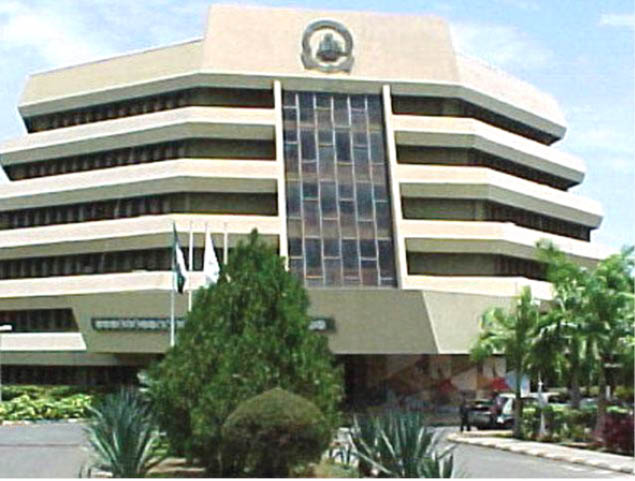Academic activities in Nigerian universities were suspended between March and December, 2020 due to the Academic Staff Union of Universities (ASUU) strike and the lockdown, occasioned by the COVID-19 pandemic. Consequently, the academic calendars have been badly ‘injured’. Students in different universities across the country were at various progression stages when the schools were closed. Some Universities were a few weeks into the first semester while others were at the verge of rounding off the semester.
On the other hand, qualifying bodies like the Joint Admissions and Matriculation Board (JAMB) managed to conduct matriculation examinations for candidates seeking admission into the tertiary institutions. So we now have returning 100L students (2019/20 intake), whose progressions were disrupted last year and freshly qualified candidates ready for 2020/21 admission.
- Concerns over fresh electricity tariff hike
- 2023: Igbo leaders demand presidential tickets from APC, PDP
Clearing this pool of candidates (backlog) will require big budgets which must be sustained through the next five to seven years by projection. This additional cost is coming at a time when the government is saying that it is unable to fund the university revitalisation projects agreed to and signed by them years ago. It is no news that the number and/or sizes of lecture halls, students’ accommodations and libraries have not increased commensurately. The staffing has not appreciated in terms of number or even motivation – giving the battering the teaching profession went through in the last nine months.
Now, faced by the multifaceted challenges highlighted above, how do we effectively manage returning students (focus on 100L) and thousands of candidates qualified by JAMB for admission into 100L? Certainly, this is a difficult question and may attract multiple answers. Below are four possible answers, including quick notes on the associated implications:
- NO ADMISSION FOR NEW APPLICANTS UNTIL CURRENT 100L STUDENTS ARE CLEARED: This option may mean wasting one year in the lives of thousands of qualified candidates. To say the least; this is far from being good for the students, parents/guardians and overall national development. Unified Tertiary Matriculation Examination (UTME) results expire after one year, so in the course of the waiting, thousands of applicants would have drifted outside the validity period of their UTME results. However, in this competitive space, universities are expected to figure out innovative means of addressing the challenge. So, there is a reputational issue here and universities do not take that lightly. This option also comes with potential revenue loss to concerned universities. Note that with UTME results expiration after a year, the prospect for having more than two applicants’ streams (waiting for admission) is practically not possible, unless if JAMB is going to relax its results management guidelines.
- RUNNING TWO PARALLEL STREAMS OF STUDENTS: Expectedly, the 2019/20 batch will be some weeks ahead of the 2020/21 batch. This disharmony can be eliminated at some point, the shorter the gap between the two streams, the sooner the harmonization takes place. This option will ‘favour’ the students but teaching/learning resources may have to be overstretched and/or new ones be injected into the system in order to cater for the two batches. But here are some of the questions that must be answered: Are the universities going to employ more staff or double the workload of the already overburdened academics? Can the universities engage adjunct Lecturers (on contract) and shoulder the extra financial burden for a period long enough to clear this backlog? Are the eligible (qualified) persons for adjunct lecturing readily available both in number and quality, especially when many other institutions adopt this option? While we can stagger/batch classes and lab works, certain essential activities cannot be easily staggered, sleeping is one of them! In other words, with this option, we may have to almost double the student’s accommodation within the next few weeks. Remember, with COVID-19 still rife, social distancing within the hostels and lecture halls is also necessary. It is indeed a very dire situation, certainly not the best time to be a Vice Chancellor!
- MERGING THE TWO STREAMS IS ANOTHER OPTION: Obviously, this is feasible only where the institution closed after covering a very few weeks in the first semester. The new batch may be ushered in first and fast tracked to be at par with the older (2019/2020) batch before the merger. But the salient questions are: are there big enough classes, accommodations, staffing, lecture halls, etc. to handle the merged streams? The answer to this question is NO for nearly all the universities. Also, in the face of COVID-19 economic realities, including the need for social distancing, can the student fees plus grants cover the extra costs? Is it realistic to shift the extra cost to parents/students? Even if the money is available, can the universities mobilise such resources to deploy the extra facilities, such as halls and hostels, within the next few weeks? We are already in January, 2021!
- ICT SUPPORTED BLENDED EDUCATION (ISBE): This is a hybrid option, involving both online and face to face classes (blended) and Information & Communications Technology (ICT) supported teaching/learning. This appears to be the most viable answer to the question raised at the beginning. Options 2 and 3 are combined here, which involves merged classes after calendar harmonization, some parallel classes and careful deployment of ICT tools along with online-ready course materials. So first, courses and/or curricula elements that can effectively be delivered via online means must be quickly identified and rendered into mixed media formats (videos, audios and fully conversational lecture notes, in hard and softcopies). Rendering the existing contents into comprehensive mixed media formats may take some time. So, in the interim, existing lecture notes may be digitised (if not already in that format) and used as temporary means of addressing the problem – pending when lecturers are trained in open and distance education delivery as well as course material development for online delivery purposes. Dedicated studios may be built and billed to support staff to develop courseware in mixed media formats and also provide general IT supports. Next, there is a need for efficient content delivery plan. Certain percentage of the course contents (say 40%) may be delivered via online means and the remaining (60%) via the traditional face to face means, which can be batched (run in parallel) – depending on class size. Similarly, for lab works, students may have to be batched and placed on harmonised timetables; already, this has been the usual practice, no thanks to facility/resource limitations. As for the students assessment (formative and summative), lower levels (say 100 – 200L) may be assessed using Computer Based Test (CBT) techniques under strict proctoring. For higher levels (above 200L, including postgraduate levels), most of the formative assessments may be conducted through online means while the final exams may remain in the traditional face to face mode. More so, certain students’ research defence sessions, at both undergraduate and postgraduate levels, may be conducted via online means.
In conclusion, while ICT supported blended teaching/learning appears to be a viable option, it is obviously not without some issues. For instance, certain ICT infrastructures are needed and may be capital intensive. Teachers may also need to go through some form of training on online courseware development, delivery methods, assessment techniques and quality assurance. Students/ parents may have to budget for some ICT tools, including internet data. The option is also heavily dependent on electric power supply.
Dr. Usman Abubakar Zaria is a lecturer at the Department of Chemical Engineering, Ahmadu Bello University, Zaria ([email protected])

 Join Daily Trust WhatsApp Community For Quick Access To News and Happenings Around You.
Join Daily Trust WhatsApp Community For Quick Access To News and Happenings Around You.


